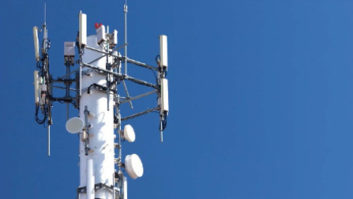ALEXANDRIA, Va. — Even with 5G a few years away from full deployment, interest in it is growing among radio engineers. Observers say radio groups are already tinkering with ways the next-gen wireless standard might their impact operations. For instance, how will 5G affect live remotes, streaming and shared audio and video? And can 5G be useful for point-to-point links and what are its possible wireless network applications?
[Learn more about the 5G trend here in our latest installment of the Need to Know series.]
Technical experts contacted by Radio World about this next generation of cellular networks say there’s a lot of be excited about. Impact in broadcast circles obviously is yet to be known; but the tech folks say radio groups should be planning now for the integration of 5G-based fixed wireless services to maximize its potential.
While the futuristic powers of 5G wireless will allow for connectivity in the United States at higher speeds with more bandwidth, experts say it is not yet defined as a technology and has unknowns, which means the radio industry is still guessing about its potential. In fact, the FCC says it is still pursuing a “comprehensive wireless strategy for the deployment of the next-generation wireless technologies.”
Anyone in the content delivery business, including broadcasters and Internet pure-play providers like Spotify and Pandora, will surely benefit from the next generation of wireless systems. “It is in broadcasters’ interest to be out in front in embracing this technology and using it to provide the best possible product to our listeners,” said one top-level radio engineering executive.
Milford Smith, a veteran engineer and now a principal with Smith, Khanna and Guil Inc., said broadcasters should view 5G as one big broadband pipe and that its delivery capability is limited only by one’s imagination.
“5G is certainly going to make the delivery of streamed content even more ubiquitous, faster and with the potential for greatly increased metadata throughput which, of course, could and will include very high quality video. Increasingly, stations are including streaming components well beyond just audio to enhance and compliment the OTA product,” Smith said.
Smith, former DOE for Greater Media, believes radio remotes will be easier to accomplish with the ability to provide high quality video and enhanced metadata from mobile situations.
The phase-in of 5G will provide broadcasters and others a significant increase in wireless speed, capacity and performance, said Bert Goldman, president of Goldman Engineering Management.
“In preparation I think radio executives and engineers should consider efforts to improve and expand their streaming options since the 5G infrastructure will mean a more personal experience for listeners and radio is in a unique position to leverage its existing resources to compete in this new environment,” Goldman said.
Further, Goldman said the additional capacity and speed of 5G will mean more use of wireless communication and telematics in vehicles. “The cost of content distribution for broadcasters will likely be reduced, thus allowing streaming and offering of multiple new entertainment products possible and more cost-effectively,” he said.
5G will almost certainly present additional competition to radio, Goldman said. “Near instantaneous downloading of audio could allow users to compile a playlist on the fly. The additional capacity to include high quality video at little extra cost will create some pressure on those who remain committed to audio-only offering,” he said. “5G will bring yet another disruption in the media and entertainment industry.”
Goldman said anecdotal evidence he has seen firsthand suggests a strong suit of 5G will be the ability of near immediate deployment of high capacity fixed or mobile service.
“I have recently been involved with testing of an upgraded 4G network to handle high-capacity fixed data services. Distribution of digital audio to four sites was deployed in just a few hours and once deployed, didn’t drop any data packets in over two weeks, far more reliable than fixed data services in the past,” Goldman said. “This was used as a temporary solution, but with 5G, waiting months for engineering services and installation of STL and other high capacity data circuits could be a thing of the past.”
Broadcast equipment suppliers also are studying the potential impact of 5G on their goods and services. Tom Hartnett, technical director for Comrex, said his company’s codecs are designed to be network-agnostic, positioning the company to leverage 5G modems the day the networks become available.
“To a large extent, 5G can be considered a congestion avoidance scenario. The millimeter wave bands used for 5G have a lot of bandwidth available, but real limitations in terms of coverage and building penetration. But hopefully putting the users who can access 5G up there will result in less congestion in the present LTE bands, providing for better overall experiences in large cities,” Hartnett said.
In essence, “the great ideas that have promulgated due to 4G availability” will now work better due to 5G being there to take on more of the user load, Hartnett said.
MORE RESOURCES
5G and Cable [Multichannel News]
5G and Video Production [Creative Planet Network]
5G and Television [TV Technology]
5G as a Platform [Sound & Video Contractor]
5G and Residential Integration [Residential Systems]







